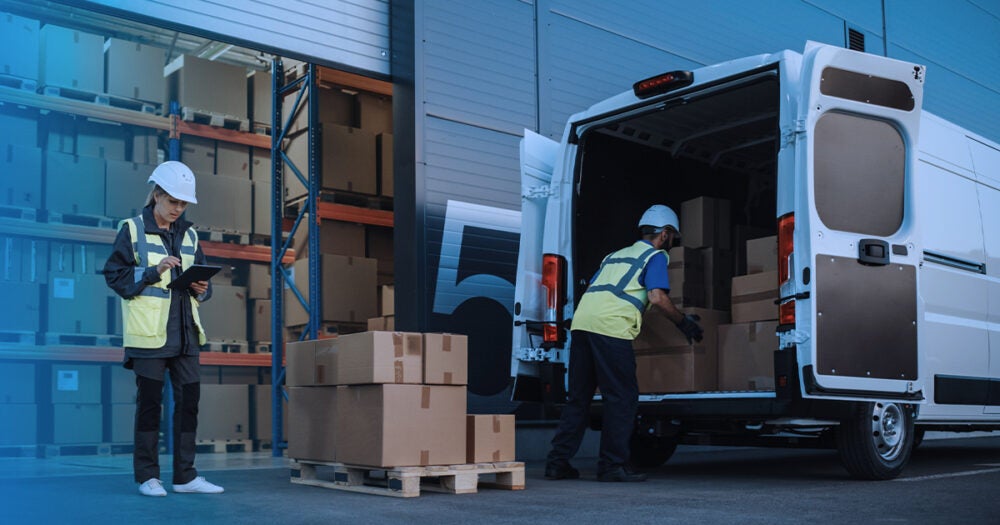In a competitive marketplace, where customers have infinite choices, it's important to stand out from the crowd and offer every solution that helps deliver products on time and in one piece while building customer loyalty and brand awareness. One such solution is white glove shipping service, which includes value-add "extras" that give special attention and treatment to valuable and sensitive shipments.
What is white glove delivery service exactly?
White glove service goes beyond collecting your products and dropping them off at their destination. It includes the shipper and carrier making the extra effort to ensure your products arrive with elevated care. For example, depending on your location or on-hand peoplepower, you may need extra help packing, boxing or crating your items, or getting them padded and wrapped for pickup. These would all be examples of white glove shipping service.
Additionally, when your item reaches its final destination, you can select white glove shipping services to have your items unpacked and the packaging hauled away. You can even ask the carrier to provide assembly, setup and other services.
Just remember that each extra touch equals extra cost. So, make sure you understand your exact pickup and delivery needs before booking your shipment and white glove delivery service.
Is white glove shipping service just a fad?
Not hardly. According to Verified Market Research, "Modern customers are increasingly purchasing expensive products such as furniture, jewelry, major household appliances, and other items online, paving the path for white glove services or white glove delivery to prosper."
Statistically speaking, the same research also indicates that white glove shipping services will grow in demand by a compound annual growth rate (CAGR) of 7.28% through 2030. That simply means your customers will increasingly demand customizable freight shipping, and to stay profitable you must provide it.
Types of Businesses That Use White Glove Shipping
Every company may need white glove shipping service now and then. However, the following shipper-types require these services more than others:
- Furniture and high-end electronics
- Art galleries
- Antique stores
- Medical suppliers
- E-commerce businesses
- Vehicle dealerships
- Luxury goods suppliers
- Exercise equipment distributors
When in doubt whether you need white glove delivery service, a third-party logistics (3PL) provider can help you determine when they are necessary.
Where can you find white glove freight shipping providers?
There are many companies that say they offer white glove freight shipping solutions. However, shippers like you should look for the following providers when analyzing your options:
3PL companies
These shipping partners will often provide a full suite of freight shipping options including white glove shipping to ensure the most elevated care for your products. And when white glove isn't necessary, they can provide less-than-truckload (LTL), full truckload (FTL), international and other specialty freight services.
Specialized carriers
As the name implies, these carriers specialize in a certain type of shipping including oversized products, temperature-sensitive shipments, hazmat materials and other white glove solutions. Ask these carriers if they have the options you need before doing business with them.
Moving companies
These types of companies generally stick to moving items from house to house or business to business. They are very common but do offer services to ensure high-value or fragile items are moved with additional care.
Company-owned fleets
Company-owned trucks are often utilized to move products for the businesses that own them. If your business owns trucks, then you can certainly implement white glove solutions to ensure internal shipping provides elevated care for products.
How White Glove Shipping Service Can Improve a Company's Brand
There are peripheral advantages of white glove delivery service that many shippers may not think about. Some advantages include:
- Customers will remember you for your personalized experiences and seek out your business in the future.
- Customers will correlate their interaction with you as a feel-good experience since you delivered their most prized shipments with care.
- Word of mouth marketing gets around and your company will be at the forefront of the conversation when it comes to specialized services.
- You will become differentiated from other companies that only offer standard freight shipping with no specialized service.
- You will become more profitable by offering services with greater margins that are important to those customers that need and expect specialized shipping.
In the end, providing white glove shipping service will provide short-term and long-term benefits as you scale your business.
Why White Glove Delivery Service Helps Build Customer Loyalty
As mentioned, white glove shipping can create long-term relationships with your customers if you provide the care and quality of shipping they require. In particular, you can provide the following outcomes for optimal returns:
- Ultimate unboxing experience. Just imagine how they will feel when their important and/or fragile shipments are delivered as expected.
- Attention to detail, tailored to specific needs. If you offer services that other shippers don't, then customers will remember you moving forward.
- Convenient assembly and dismantle option. For those customers with limited resources, providing help with assembly and dismantling will make you a business of choice.
- Expertly trained carriers. Working with the best carriers in the business will make your customers more confident in your services, which means repeat business.
- Personalized attention and customer service. Your customers will feel special that you went the extra mile to deliver their valuable products.
Need white glove shipping service? Contact GlobalTranz
GlobalTranz is a leading third-party logistics (3PL) company that provides top freight solutions to thousands of shippers across the nation. Now, as part of WWEX Group alongside Worldwide Express and Unishippers, we back shippers through prosperous and turbulent times with our combined resources, financial stability and full suite of services — including white glove solutions.
Want to learn how GlobalTranz can help you elevate your business by providing industry-leading white glove shipping service? Connect with an expert today!

